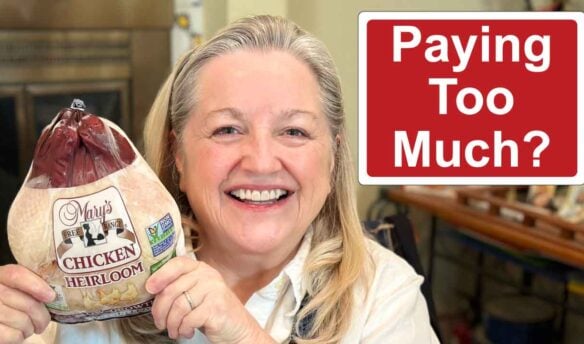If you’re looking for creative ways to reduce waste and save money, start implementing these 5 thrifty cooking habits in your kitchen today. You’ll be surprised at how many more delicious meals you can make and how you can stretch your grocery budget even further.
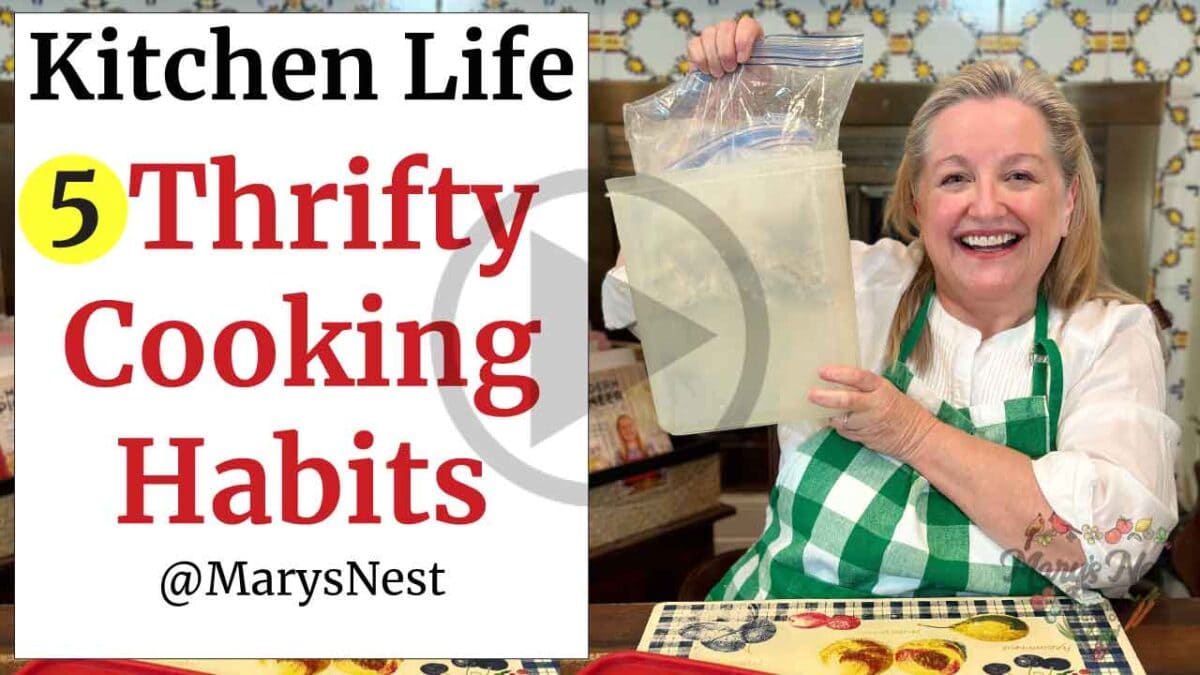
Affiliates note: As an Amazon Associate I earn from qualifying purchases. My content may contain affiliate links to products and services. If you click through and make a purchase, I’ll receive a small commission. It does not affect the price you pay.
Table of Contents
- Habit 1: Start 3 Scrap Bags
- Habit 2: Clean Out Your Crisper Meals
- Habit 3: Clean Out Your Refrigerator Meals
- Habit 4: Inventory Your Pantry
- Habit 5: Store Your Food Correctly
- Bonus Thrifty Cooking Habit
- Download Your Free 36-Page Pantry List
- The Modern Pioneer Cookbook
- Join the Traditional Foods Kitchen Academy
- Kitchen Academy Videos
- Shop for items used in this blog post or video
Habit 1: Start 3 Scrap Bags
Instead of throwing food scraps away, start three scrap bags that you’ll be able to make nutritious recipes with:
- Chicken carcasses and scraps – I like to collect up to three chicken carcasses and use them to make chicken bone broth. As a bonus, if you add some chicken feet, you can make Collagen Rich Bone Broth for Under $2.00.
- Vegetable scraps – Placing your vegetable scraps into a separate bag increases the options of what you can do with your scraps. When you make bone broth, you can add vegetable scraps for more nutrition. Alternatively, you can use your vegetable scraps to make a vegetable broth or, better yet, a super mineral broth!
- Bread scraps – You can use your leftover pieces of bread to make breadcrumbs, croutons, and more.
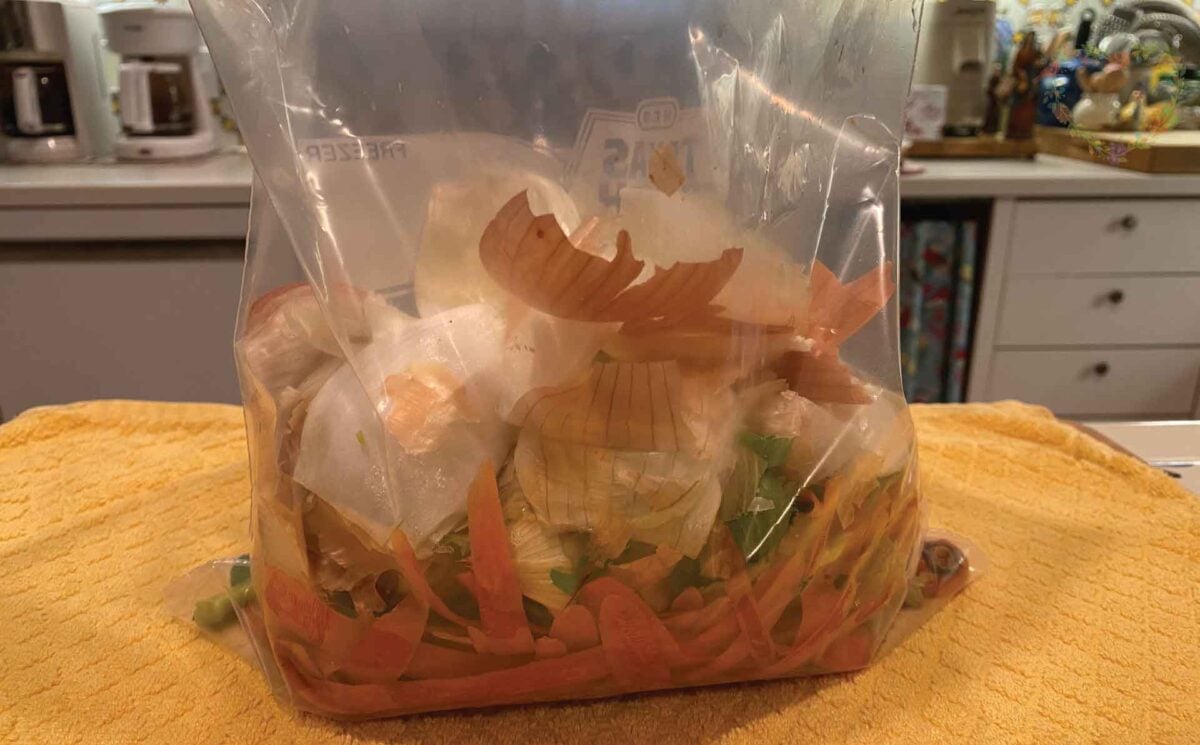
As a bonus, you can keep the beef bones that you’ve collected, such as leftovers from cooking up a T-bone steak, into a fourth scrap bag. When you have enough beef bones, you can make beef bone broth.
However, you don’t have to separate your chicken and beef bones unless you want to. You can store your beef bone scraps in your chicken carcass scrap bag and make a chicken and beef combination bone broth when you’ve collected enough scraps. The resulting bone broth will still taste pleasant, and you’ll also get all the nutritional benefits from your bone broth.
Make a thrifty cooking habit of saving and using your scraps. It’ll come in handy when you visit your crisper and refrigerator.
Habit 2: Clean Out Your Crisper Meals
The crisper is the place in the refrigerator where you place your fresh produce. You can typically adjust the humidity level in your crisper to help preserve the freshness of your items. Unfortunately, the crisper is also where vegetables may linger past their prime.
You’ll need to discard rotten vegetables, of course, but you also need to resist the temptation to toss out produce that is just past its prime. These vegetables may not look the best in their raw state, but think about how delicious and useful they would be if you made a meal with them.
Making a soup is the easiest way to incorporate scraps into a delicious meal, but there are many other ways to make meals from scraps. I have a series of videos showing you how to cook scraps and how to make soups, such as my Italian Minestra – Beans and Greens Soup. I also show you a selection of cookbooks that focus on cooking with scraps.
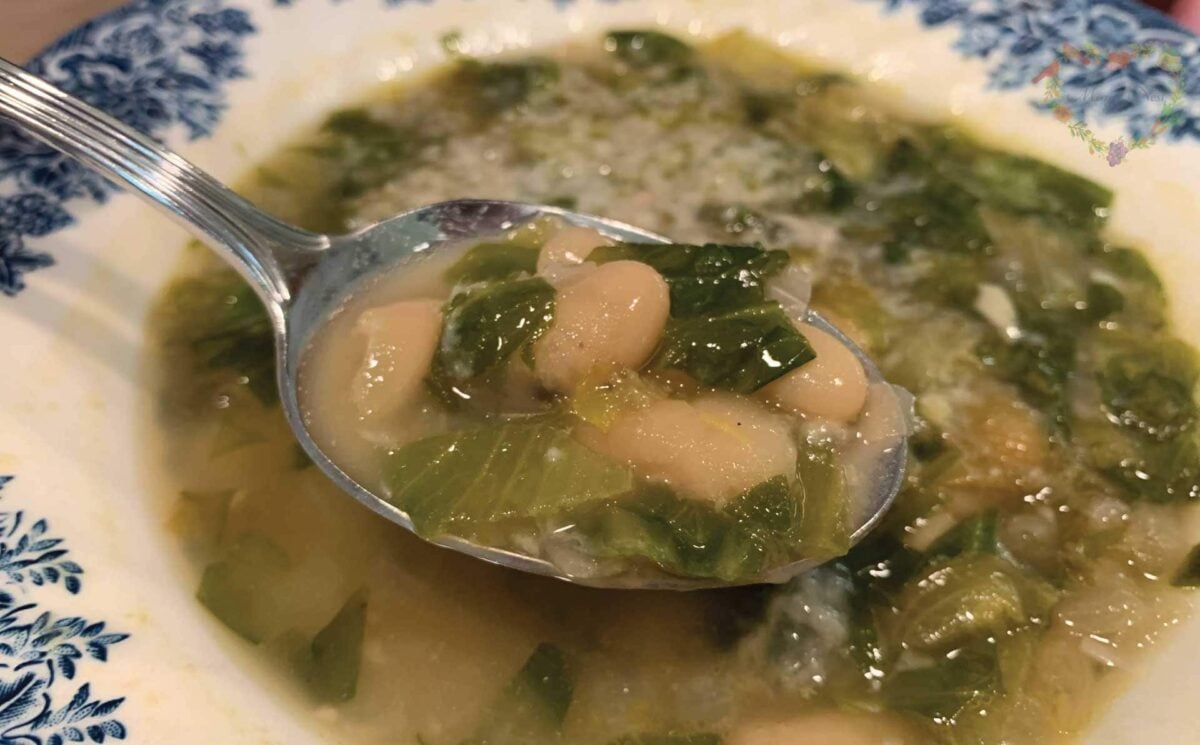
So make it a thrifty cooking habit once a week to:
- Pull all the produce out of your crisper, or at least ensure you can get to all the items stored in your crisper.
- Inspect your produce.
- For produce past its prime, think of how you can use it in a recipe instead of throwing it away or adding it to your compost bin.
By making “clean out the crisper” meals, you’ll save money and create some tasty recipes, including How to Quick Pickle Vegetable Scraps for a Tasty Treat and a No Waste Kitchen.
Habit 3: Clean Out Your Refrigerator Meals
Now that you’ve made a habit of cleaning out your crisper once a week, you can graduate to cleaning out your entire refrigerator. I’m not talking about taking everything out of your refrigerator and then wiping the shelves down with a rag and vinegar, although that may be a good idea from time to time.
Just like you did when inspecting your crisper, you’ll check each item in your refrigerator. Unfortunately (or fortunately), you may find items near their expiration date or past their prime. See what needs to be used up and plan a meal on those items. For example, if you have some leftover homemade sauerkraut in a jar, you can make a tangy and delicious sauerkraut soup.
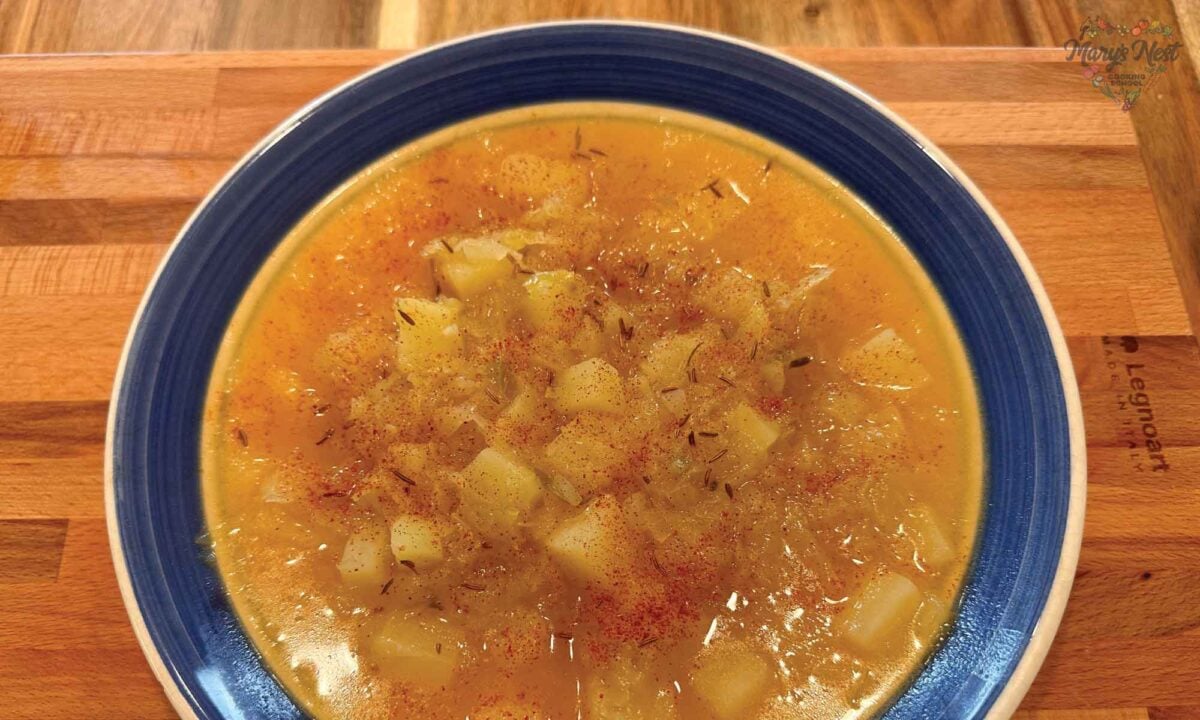
The loss of fresh food can be the biggest contributor to waste in the kitchen, but just like the resourceful home cooks who worked hard at not wasting food due to scarcity or rationing during the Depression or the world wars, you’ll be amazed at how many meals you can create from food that you may have thrown out in the past.
The more you perform this thrifty cooking habit, the more creative you’ll be in finding ways to feed yourself and your family while working toward a no-waste kitchen at the same time.
Habit 4: Inventory Your Pantry
When performing the last two thrifty cooking habits, you’ve been unconsciously working on this fourth thrifty cooking habit. As you’ve been cleaning out your crisper and refrigerator, you’ve been making a mental inventory of what you have in those areas.
Now, you’ll formalize your inventory skills by making an inventory of what you have in your four corners pantry, which includes your working pantry, refrigerator, freezer, and extended or Prepper Pantry.

Start with your refrigerator since you’re most familiar with this pantry corner based on your previous habits. You’ll take an inventory of what you have in your refrigerator before you go shopping so you know what you need, and you won’t overspend on items you already have and don’t need.
I’m here to help you with two free downloads. As part of my Top 15 Foods to Stock Up on Now for Your Prepper Pantry blog post, you can download and print out these two helpful checklists:
- Checklist #1: Four Corners Pantry Inventory
- Checklist #2: Four Corners Pantry Grocery List
You can use the first checklist to make an inventory of what you have so you know what you’re low or out of and what you need. And then, put those items you need on the second checklist so you know what to buy at the grocery store or your local farmer’s market.
Once you’re done inventorying your refrigerator, continue with the rest of your Four Corners Pantry. Each time you perform this thrifty cooking habit, it’ll take less time since you’ll get to know what you have stored away, which makes life easier for meal planning, staying within your grocery budget, and maintaining a no-waste kitchen.
Habit 5: Store Your Food Correctly
For this last thrifty cooking habit, think about how you store food in your refrigerator and freezer. There are places for using plastic bags, but they are typically not reusable. (Note that plastic bags are helpful and reusable for storing the scraps from the first habit in the freezer since you can reuse the bags almost indefinitely.)
So instead of relying on plastic bags to store your leftovers and loose items, turn to reusable containers. Specifically, look for glass containers with locking plastic lids that will maintain your food’s freshness and keep any liquid from spilling out. In addition, you can easily see what’s inside without having to open your container.
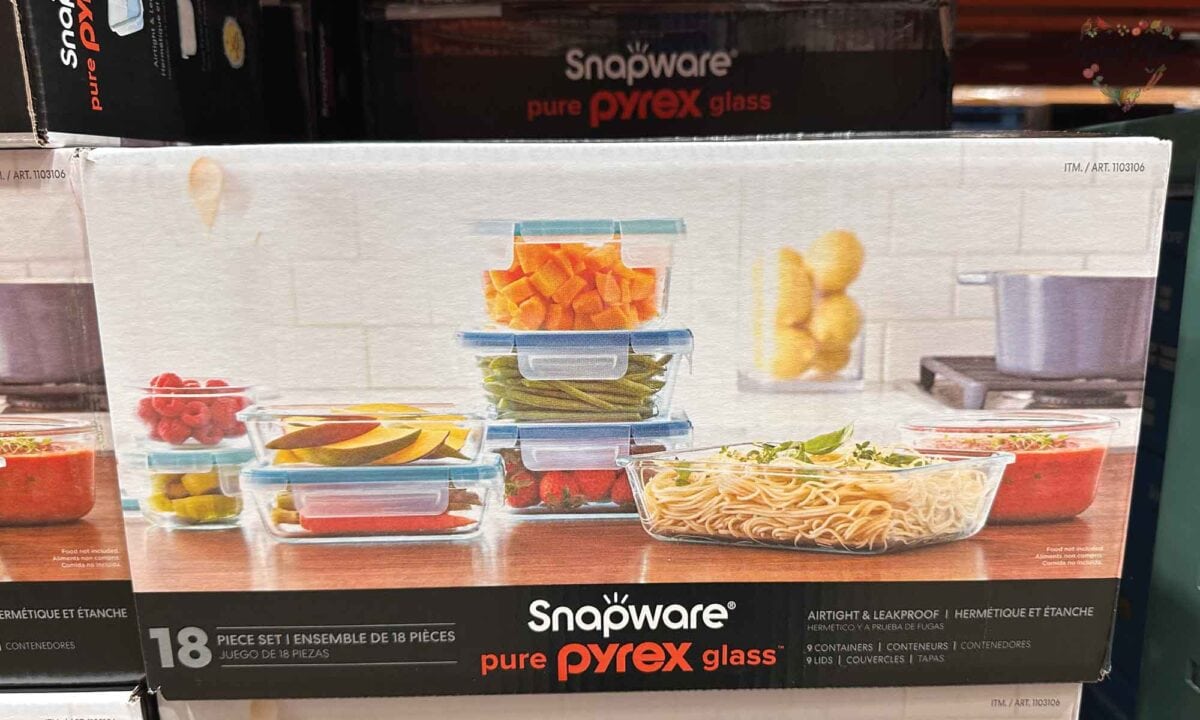
I like using the Snapware brand that I’ve found online and at my local Costco, but I’m sure there are many similar brands you can choose from, including those sold at your local grocery store.
With this thrifty cooking habit, you’ll also find that the food in your glass containers looks a little more attractive to eat. Yes, it may be a psychological feeling, but if it helps you enjoy preparing food or finish off leftovers instead of discarding them, that’s a wonderful habit to have!
Bonus Thrifty Cooking Habit
In many of these thrifty cooking habits, you’ve been focused on scraps, either saving them or making a meal out of them. For this bonus habit, you’ll want to do something completely different with your vegetable scraps. You’ll plant them!
In my 10 Vegetables You Can Regrow from Kitchen Scraps to Create a Recurring Harvest video, I show you how to plant vegetable scraps, such as the root end of green onions or the stem end of carrots. Plant your scraps in your kitchen garden, and you’ll leverage this habit to create a new stream of food for your future meals.
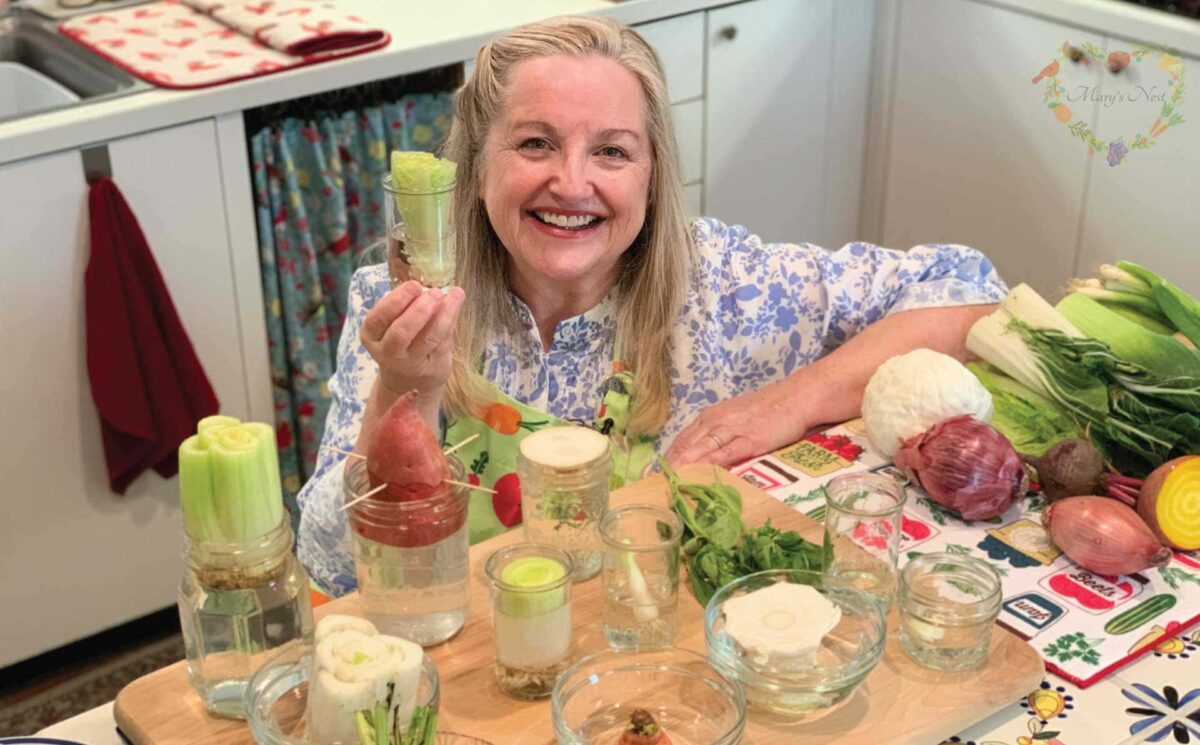
Download Your Free 36-Page Pantry List
For an extensive list of the traditional foods you can make and purchase to stock your pantry, be sure to download my free 36-page Traditional Foods Pantry List. This comprehensive eBook is full of links to recipe videos, helpful articles, and more!
And if you’re looking for a printed book full of my traditional foods recipes that shows you how to create a traditional foods kitchen, be sure to preorder your copy of my new book, The Modern Pioneer Cookbook.
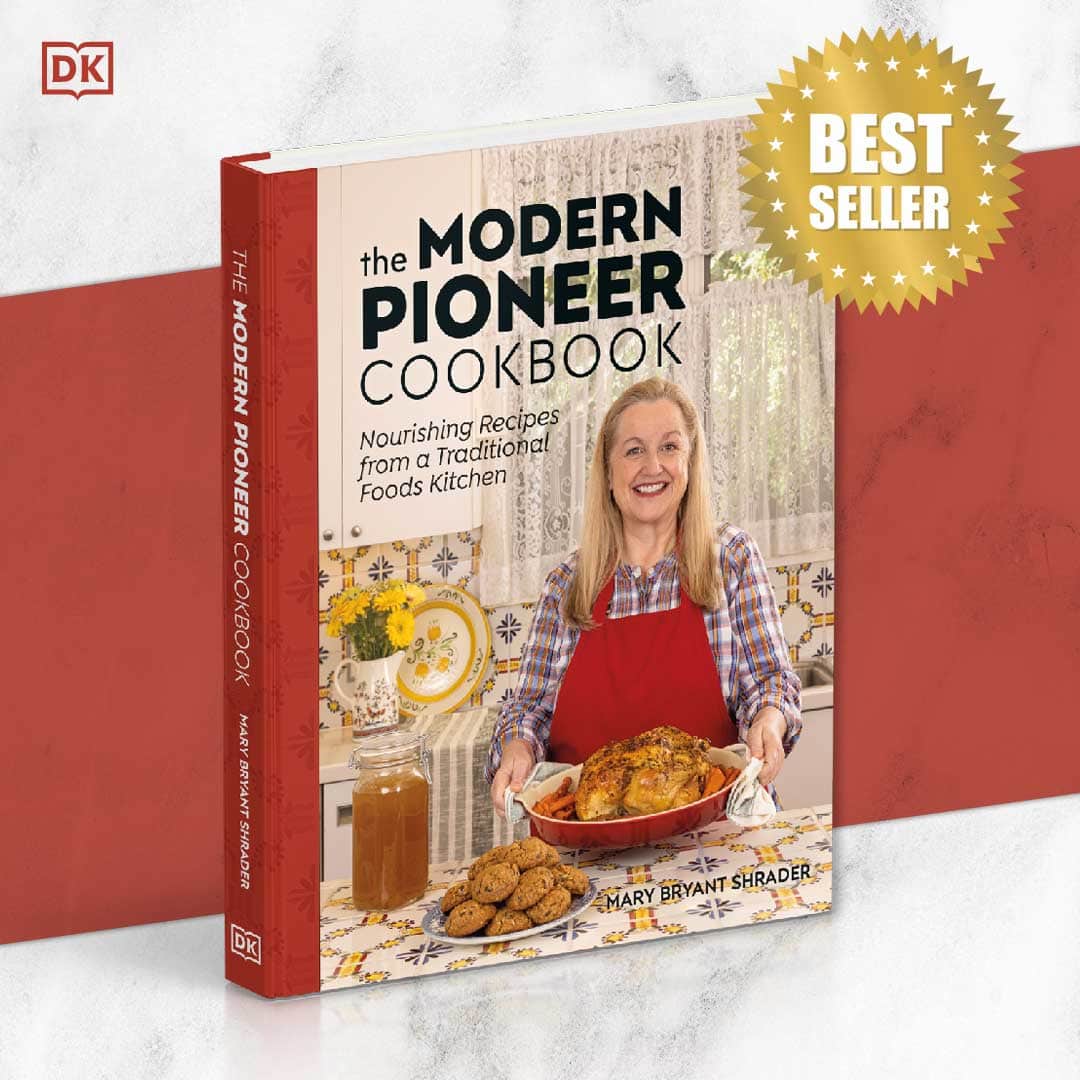
Order YOUR COPY Now!
The Modern Pioneer Cookbook
Seasonal ingredients, traditional techniques, and nourishing recipes. Over 85 traditional, from-scratch recipes! Discover for yourself how you can use simple ingredients and traditional techniques to cook the modern pioneer way.
Join the Traditional Foods Kitchen Academy
Are you looking for more traditional foods videos? If so, I invite you to join the Traditional Foods Kitchen Academy. Members of this optional paid YouTube community get access to exclusive videos, live streams, and other members-only perks. Plus, your YouTube comments include a special members-only badge.
Kitchen Academy Videos
Discussing the Secrets to Perfect Green Herbal Oils
Let’s talk about the popularity of flavored herbal oils.
Are You Salt Sensitive or Salt Resistant? Get the Latest Salt Intake Research
Learn how your body may react to salt intake differently from others.
What Is the Best Time to Eat Dinner?
Find out if eating dinner early or late is best for you. You might be surprised!
Stay in Touch with Mary’s Nest
- Subscribe to My YouTube Channel for Traditional Foods Videos (Free) - When you subscribe, be sure to click on the notification bell that will let you know each time I upload a new video.
- Subscribe to Mary’s Traditional Foods Newsletter (Free) - Get a free 36-page eBook for signing up: How to Stock Your Essential Traditional Foods Four-Corners Pantry.
- Join the Traditional Foods Kitchen Academy (Optional Paid) - For more detailed videos and exclusive members-only perks, join my YouTube membership community.
- Order The Modern Pioneer Cookbook (Optional Paid) - Get a printed book of Mary's nourishing recipes from a Traditional Foods Kitchen. This bestselling cookbook is published by Penguin Random House with their DK imprint.
I look forward to having you join me in my Texas Hill Country Kitchen!
Shop for items used in this blog post or video
Favorite Kitchen Supplies
- Favorite Aprons
- Spice Grinder
- Countertop Burner (On my kitchen island in many recipe videos.)
- Handheld Vacuum Sealing System
- Vacuum Lids
- Whisk
- Silica Gel Packets (Helps keep moisture from building up in your mix)
- Cast Iron Dutch Oven
- 8-Quart Slow-Cooker
- Fat Separator (Clever kitchen device to help you decant bone broth)
- Flour Sack Towels
- pH Strips (Helps you check on the acidity of your vinegar)
Amazon Shop and Shopping Guide
- Visit Mary’s Nest Amazon Shop
- Visit my Shopping Guide page
Get up to 15% off for stocking your Traditional Foods Pantry and equipping your Modern Pioneer Kitchen, including discounts from US Wellness Meats, Farmhouse Teas, Lehman's, Masontops, Cultures for Health, Survival Garden Seeds, Redmond Real Salt, Plan to Eat, and More!




